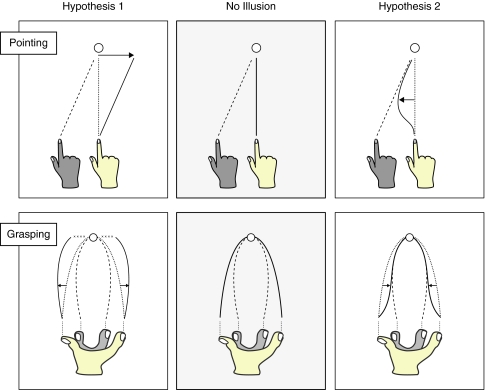Fig. 5.
Opposing hypotheses about possible illusion effects on motor responses in the traditional rubber hand illusion (upper panels) and on the present grasping task (lower panels). The light gray hand indicates the participant’s own hand (solid trajectory), and the dark gray hand indicates the rubber hand (dashed trajectory). Dotted lines indicate the expected movement trajectory in the absence of an illusion effect. Arrows indicates the direction of the effect of the illusion according to each hypothesis. Center panels indicate unaffected motor responses. Left panels indicate movement trajectories in which a motor program is planned based on the illuded location or posture of the hand, and subsequently carried out from the actual location or posture. Conversely, right panels indicate movement trajectories in which a trajectory in space is planned, and the motor system brings the movement of the limb onto this trajectory soon after the movement begins. Differences are exaggerated for clarity

